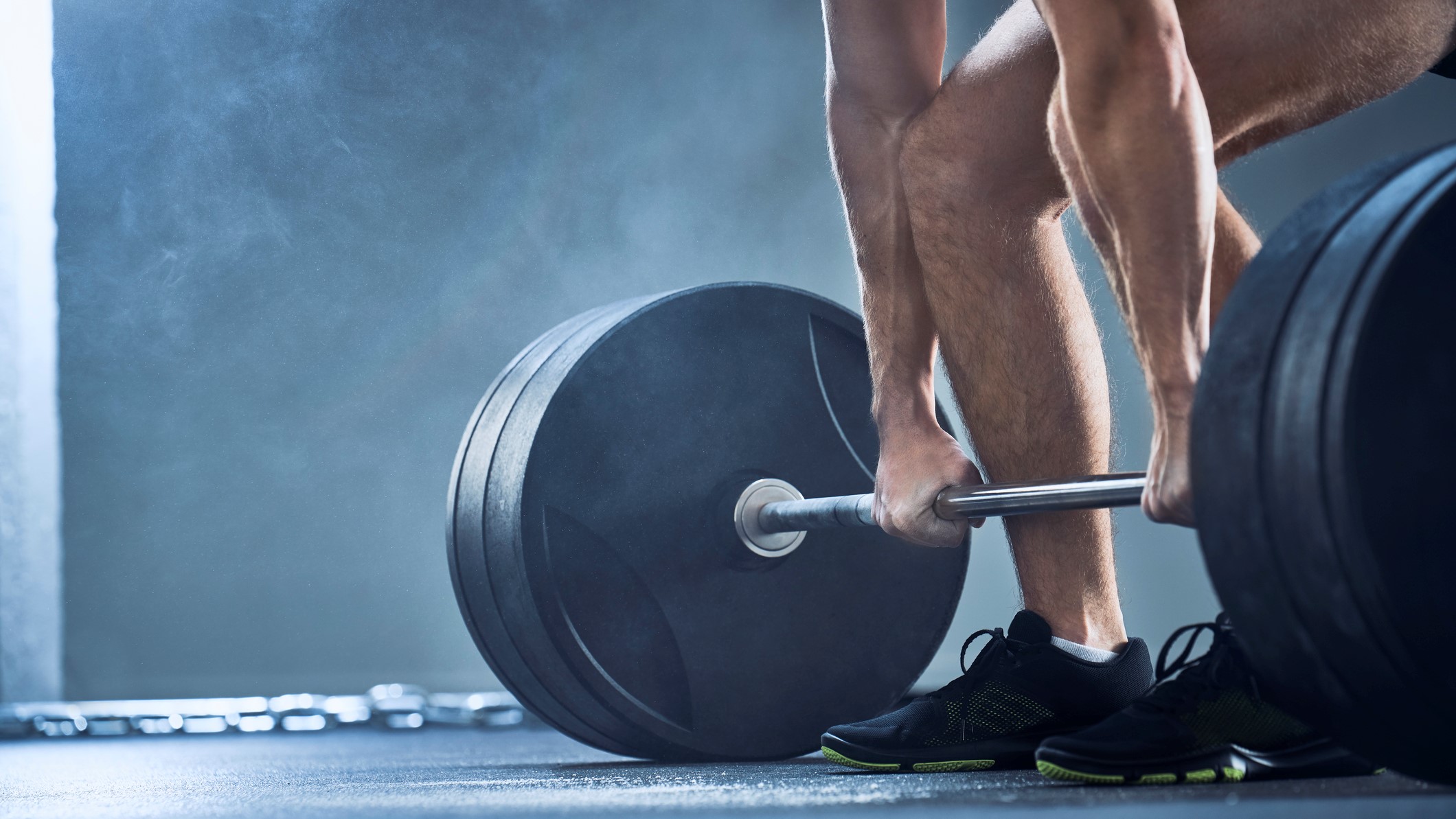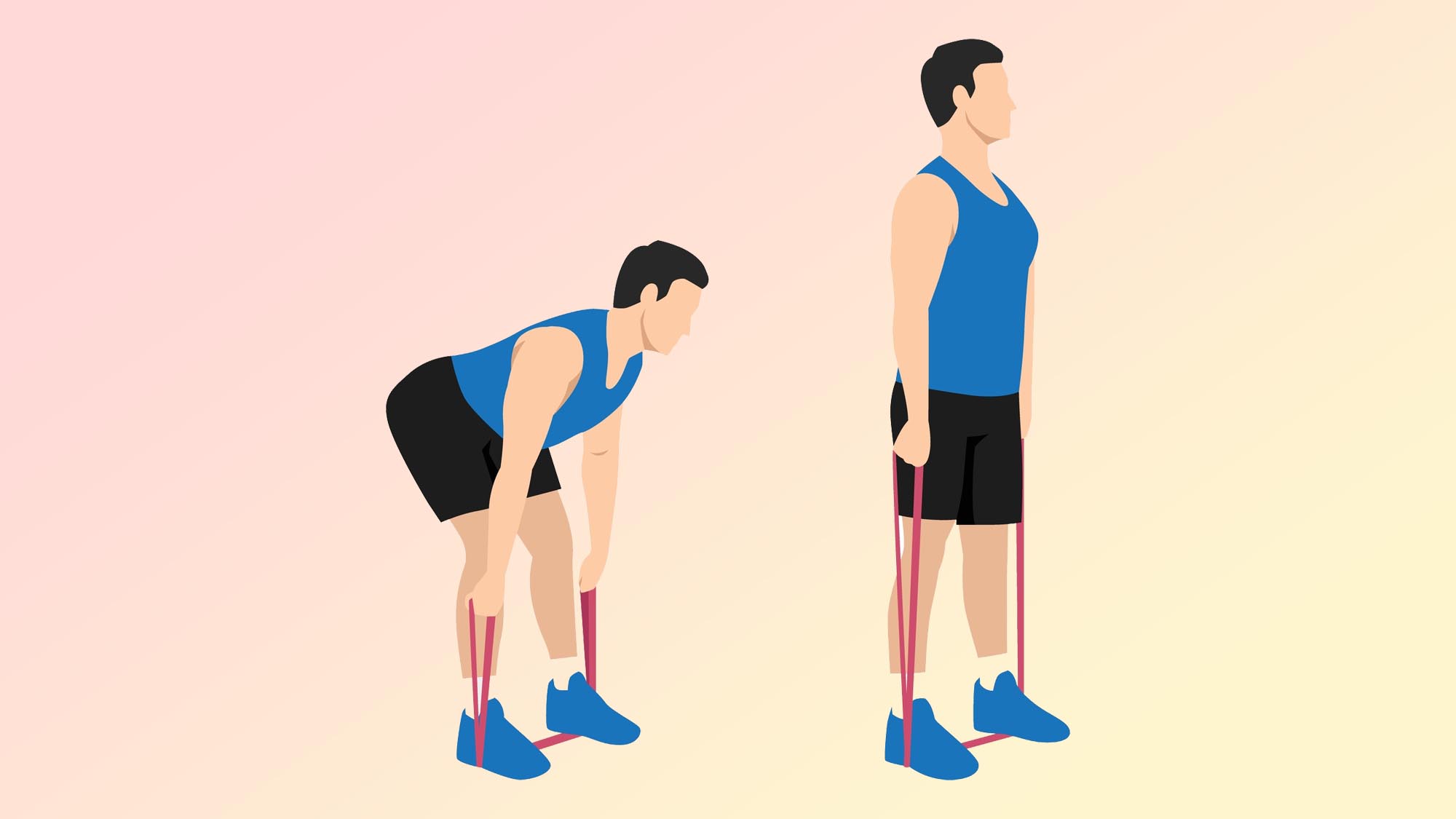How to deadlift with a resistance band
How to add deadlifts to your home workouts

Learning how to deadlift with a resistance band could add a lot of value to your workout plan. Deadlifts work more or less every muscle in the body and are especially effective at building the legs and glutes, strengthening the back and core, and improving posture.
The deadlift is traditionally performed with a barbell, but if you’re looking to get the benefits of the exercise from the comfort of your home, you can grab a resistance band and still get a brilliant workout. Resistance bands provide an excellent alternative to traditional equipment as they’re lightweight, inexpensive, and versatile.
Resistance bands come in a variety of lengths, strengths, and sizes, allowing you to customize your workout. If you’re looking to buy a set of resistance bands and you’re not sure where to start, we’ve hand-picked the best resistance bands on the market here.
Meanwhile, resistance bands aren't just great tools for deadlifts. Check out these resistance band arm exercises to help sculpt and tone your arms. Alternatively, we’ve found the best ab workouts you can do for free, the exercise that’s better than squats at building your glutes, and the dumbbell workout with over 1.3 million views.

How to do a deadlift with a resistance band
Before we get started, it’s important to note that workout tips should not substitute professional guidance. Improper form can cause injury, so if you’re unsure, it’s a good idea to seek advice from a PT, or trainer.
When it comes to deadlifting, it’s important to get your form right, regardless of the equipment.
Step 1: As with almost any exercise where you are on your feet, your weight should be balanced over your mid–foot. To do this, stand with your feet flat on the floor, and feet hip-width apart. This will put you in the most balanced and stable position, allowing you to be in the strongest position possible.
Get instant access to breaking news, the hottest reviews, great deals and helpful tips.
Step 2: To start the deadlift, stand on a long resistance band, with your feet in the middle and your hands holding on to each end of the band. The nearer your hands are to your feet, the higher the resistance will be as you stand up.
Step 3: The deadlift is a hip-focused exercise, so most of the movement should be at the hips, with a relatively small amount of bending at the knees and ankles. To get into your deadlift starting position, lean over as far as you can, keeping your shins roughly vertical (a little bend in the knee is okay, but this is not a squat), and your back flat. Make sure the back stays flat during the exercise to ensure you’re working the hip muscles and not the back.
Step 4: Once you’re in your starting position, stand up while holding onto the band. As you stand, the resistance will increase and you should feel the band stretch as you get to the end of the rep. Make sure you’re performing each deadlift in a slow, controlled movement and not rushing to complete each rep. Once you’re standing tall at the top of the movement, return to the starting position by bending at the hips.
Benefits of resistance band deadlifts
Resistance band deadlifts are especially useful because of the way the resistance changes throughout the exercise. One of the key benefits with a resistance band is that as you stand up the resistance increases, so it’s matched much better with the strength curve of your glutes, hamstrings and back muscles. So as they get into stronger positions, there’s more resistance for them to overcome. All in all, that should result in better strength and muscle growth than if the weight were the same for the entire rep.
How to get your form right during a resistance band deadlift
As we mentioned above, your form is important. Here’s some tips on how to use a resistance band for deadlifts. Master the hinge movement first: If you’re finding the hinge movement challenging, start by standing on a light long loop band, and wrap the band over your shoulders instead of holding it in your hands. This will allow you to focus more on the hip/torso movement instead of the resistance you’re holding on to.
Get the resistance right: If you’re finding a band too easy or too difficult, instead of swapping the band out, you can change your grip position to increase/decrease the resistance as needed. You can also change your foot position – rather than standing on a single length of band, double it over in order to feel more resistance.
As you get fatigued, you may find that you’re not quite able to stand all the way up as the resistance increases. This is okay during your final reps, but try not to do too many reps like this, as full glute and hamstring engagement comes when the hips are fully straightened — as shown by a study in 2020 from the Journal of Sports Science & Medicine.
Will McAuley is a London-based Personal Trainer and Nutrition Coach who’s writing has appeared in Men’s Fitness and GQ magazine, covering exercise, nutrition and health. He has a Master’s degree in Strength & Conditioning from Middlesex University in London, is a published scientific author in the Journal of Strength and Conditioning Research, and holds a Bachelor’s degree in Linguistics from Trinity College Dublin.


